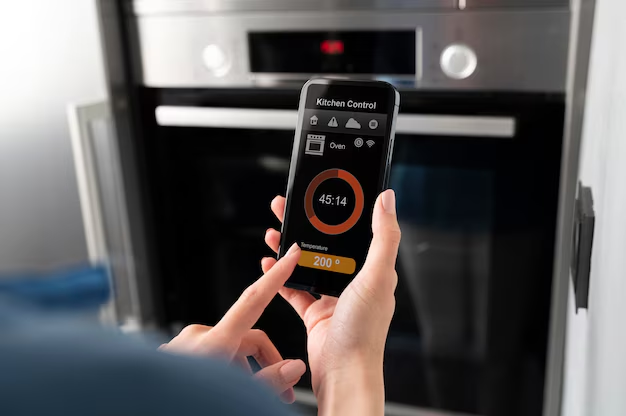Setting the Right Temperature for Your Refrigerator: A Comprehensive Guide
Imagine reaching for your favorite yogurt only to find it's spoiled before the expiration date. A quick glance at your refrigerator's temperature setting might reveal the culprit. Maintaining the right refrigerator temperature is vital not just for preserving your food's freshness but also for keeping your household safe from foodborne illnesses. Understanding the optimal temperature settings and management can transform your daily kitchen experience.
📉 Understanding the Ideal Temperature Range for Refrigerators
The key to keeping your food fresh and safe lies in maintaining a consistent temperature. Most experts agree that the ideal temperature for a refrigerator is at or below 40°F (4°C). This temperature range ensures that bacteria growth is minimized, significantly reducing the risk of food spoilage and foodborne illnesses.
Why 40°F?
Temperatures above this threshold allow bacteria to proliferate rapidly, which can lead to faster spoilage and increased health risks. At 40°F or lower, the refrigerator provides a chilly environment that slows down the growth of most bacteria without freezing the contents.
Balancing Different Zones Within the Refrigerator
Refrigerators often have varying temperature zones, with the back and lower shelves being colder than the door and upper compartments. Understanding how to utilize these zones optimally can significantly enhance food preservation.
- Back of the Fridge: Ideal for milk and eggs, as it maintains the most consistent temperature.
- Crisper Drawers: Best for fruits and vegetables. Many models allow you to adjust these specifically for either high-humidity or low-humidity storage.
- Refrigerator Door: Though convenient for easy access, this area is the warmest. Store condiments and items that aren’t sensitive to temperature fluctuations here.
🔧 How to Monitor and Adjust Your Fridge Temperature
Having a firm grasp of your fridge's temperature settings can be the difference between fresh food and a fridge full of spoiled items. Regular monitoring and adjustments are key.
Tools for Monitoring
- Built-in Thermometers: Many modern refrigerators come with digital displays showing the current temperature. Utilize this feature to ensure your settings are accurate.
- Separate Thermometers: For older models or more precise control, consider placing an appliance thermometer in both the refrigerator and freezer compartments. This helps confirm that your settings align with the real-time internal temperature.
Adjustment Tips
- Proper Airflow: Ensure that air vents inside the fridge are not blocked by large items. Clear vents will make sure that cold air circulates properly, keeping all areas uniformly cool.
- Regular Defrosting: Especially for older models, a manual defrost will prevent ice build-up which can hinder cooling efficiency.
- Seasonal Adjustments: In hotter weather, your fridge may require a lower setting to compensate for the increased ambient temperature.
🥗 Benefits of Maintaining the Right Refrigerator Temperature
Keeping your refrigerator at the recommended temperature is more than just a food safety issue; it has multiple benefits that can improve your kitchen efficiency and reduce waste.
Increased Shelf Life
When your refrigerator is set to the correct temperature, food lasts longer, reducing trips to the grocery store and saving on overall household expenses.
Energy Efficiency
A fridge working in optimal conditions does not have to overcompensate, which conserves energy and can lower electricity bills over time. An overworked appliance due to improper settings or blocked vents consumes more power, leading to unnecessary costs.
Food Safety
Most importantly, it minimizes the risk of foodborne illnesses. Given that certain bacteria can cause serious health implications, maintaining safe temperatures is crucial for protecting your family’s health.
🛠️ Common Refrigerator Temperature Issues and Solutions
Even with the best settings, your fridge might encounter issues that disrupt its cooling capabilities. Identifying and tackling these problems early can save you both headaches and spoilage costs.
Temperature Fluctuations
If you notice that the temperature inside your fridge isn't stable, it could be due to frequent door openings or a faulty seal. Check the door gaskets for damage and replace them if necessary. Reducing the number of times the refrigerator door is opened will also help maintain consistent temperature levels.
Ice Build-Up
Ice build-up can occur when the airflow is obstructed or the defrosting mechanism is malfunctioning. Regular maintenance, such as defrosting and keeping airflow vents clear, is essential in preventing this issue.
Persistent Warm Spots
Uneven cooling can leave some areas warmer, affecting stored items. Reorganize your fridge’s contents to ensure nothing blocks the circulation of cold air. Consider placing thermometers in different areas to monitor discrepancies.
📝 Handy Quick Tips for Refrigerator Management
To summarize the key points, here are some quick tips to keep your refrigerator running efficiently and safely. Use this list to optimize food preservation and energy use.
- 📏 Maintain: Set your fridge to at or below 40°F (4°C) for optimal food safety.
- 🎛️ Monitor: Use digital displays or separate thermometers to track temperatures accurately.
- 🌬️ Airflow: Ensure no vents are blocked and cold air circulates freely.
- 🧊 Defrost: Regularly defrost and maintain appliance components.
- 🔄 Zones: Store items in appropriate zones to utilize varying temperatures effectively.
- 🚪 Minimal Openings: Limit door openings to maintain consistent internal temperatures.
- ♻️ Check Gaskets: Regularly inspect and replace faulty gaskets to ensure a tight seal.
Implementing these strategies can extend the life of your refrigerator, ensure food safety, and keep utility bills in check.
By keeping your fridge at the right temperature and managing its use wisely, you provide a safer, more efficient, and economically sound environment in your kitchen. Staying informed about these seemingly small adjustments can make a significant impact on your daily life. Remember, a well-maintained refrigerator not only preserves your food but also peace of mind.
